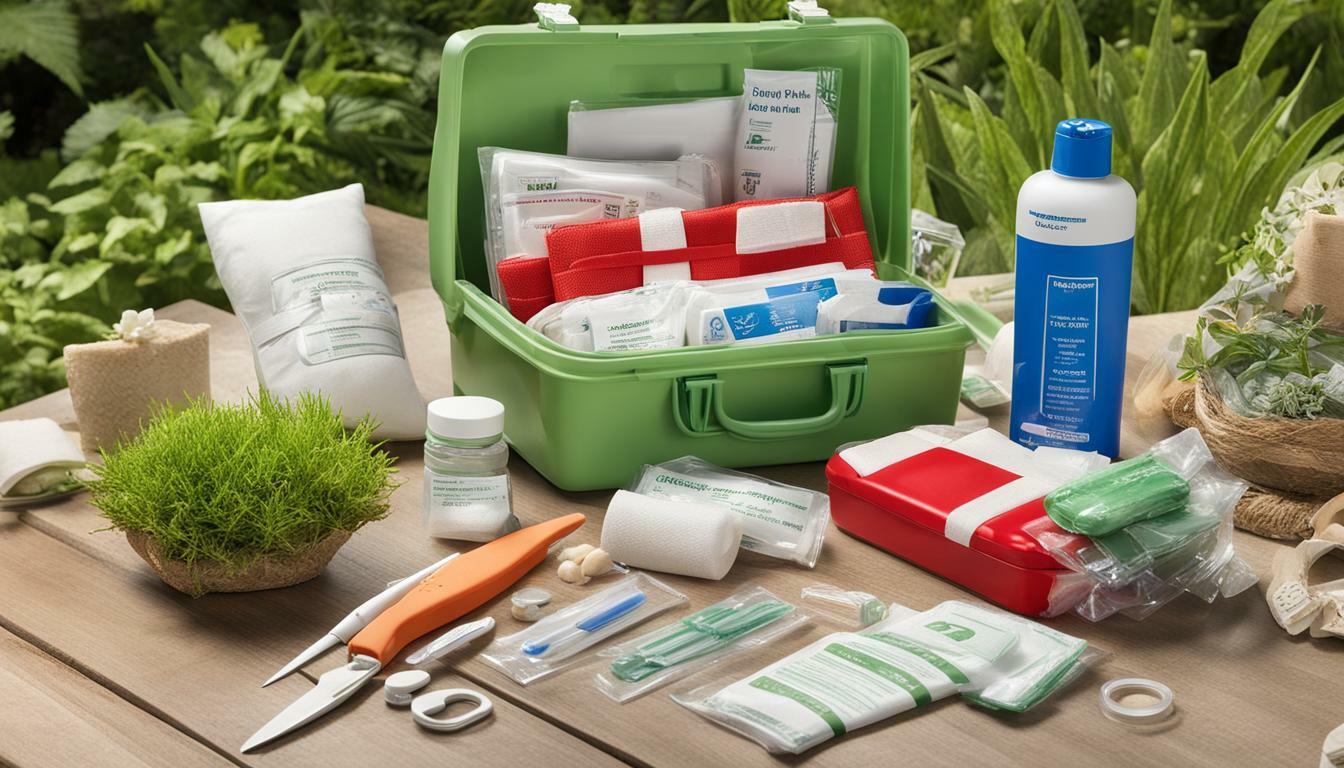Gardening is an enjoyable pastime that offers several benefits, from improving mental health to providing fresh produce. However, it also comes with potential risks, particularly plant-related injuries. These injuries can range from minor cuts and scrapes to more severe conditions such as poisoning or allergic reactions. Therefore, it is essential to have a first aid kit specifically designed for gardening accidents.
A well-equipped first aid kit can provide immediate assistance in case of injuries, ensuring prompt treatment and reducing the risk of complications. In this section, we will discuss the importance of having a first aid kit for gardening and highlight the essential items that should be included in it. We will also examine the different types of injuries that can occur while gardening and provide first aid tips for treating them.
Key Takeaways
- Plant-related injuries are common in gardening and can range from minor cuts to severe conditions.
- A well-equipped first aid kit specifically designed for gardening is essential for immediate assistance in case of injuries.
- The first aid kit should include essential items such as bandages, antiseptic solutions, tweezers, and gloves.
- Understanding the nature of plant-related injuries and following safety precautions can minimize the risk of accidents.
Understanding Plant-Related Injuries
Gardening is a fulfilling and enjoyable hobby, but it also poses certain risks, particularly when dealing with plants that can cause skin irritation or other injuries. Being aware of plant-related injuries and how to treat them is critical for gardeners.
One of the most common plant-related injuries is skin irritation caused by exposure to certain plants’ sap. For instance, plants like Poison Ivy and Giant Hogweed can cause severe skin reactions that may result in blisters, rashes, or even burns. Similarly, thorns, prickles, and needles from plants like roses, cacti, and agave can cause puncture wounds and cuts.
Other types of plant-related injuries include allergic reactions, inhalation of toxic pollen or spores, and ingestion of poisonous berries or fruits. In any of these cases, prompt first aid treatment is crucial.
If you experience skin irritation or a puncture wound from a plant, wash the affected area with soap and water, and take over-the-counter pain relief medications like paracetamol or ibuprofen to alleviate pain and inflammation. If the injury is severe, seek medical help immediately.
Remember to always wear gloves and protective clothing when dealing with plants that can cause skin irritation or other injuries, and avoid touching your face or eyes after handling them.
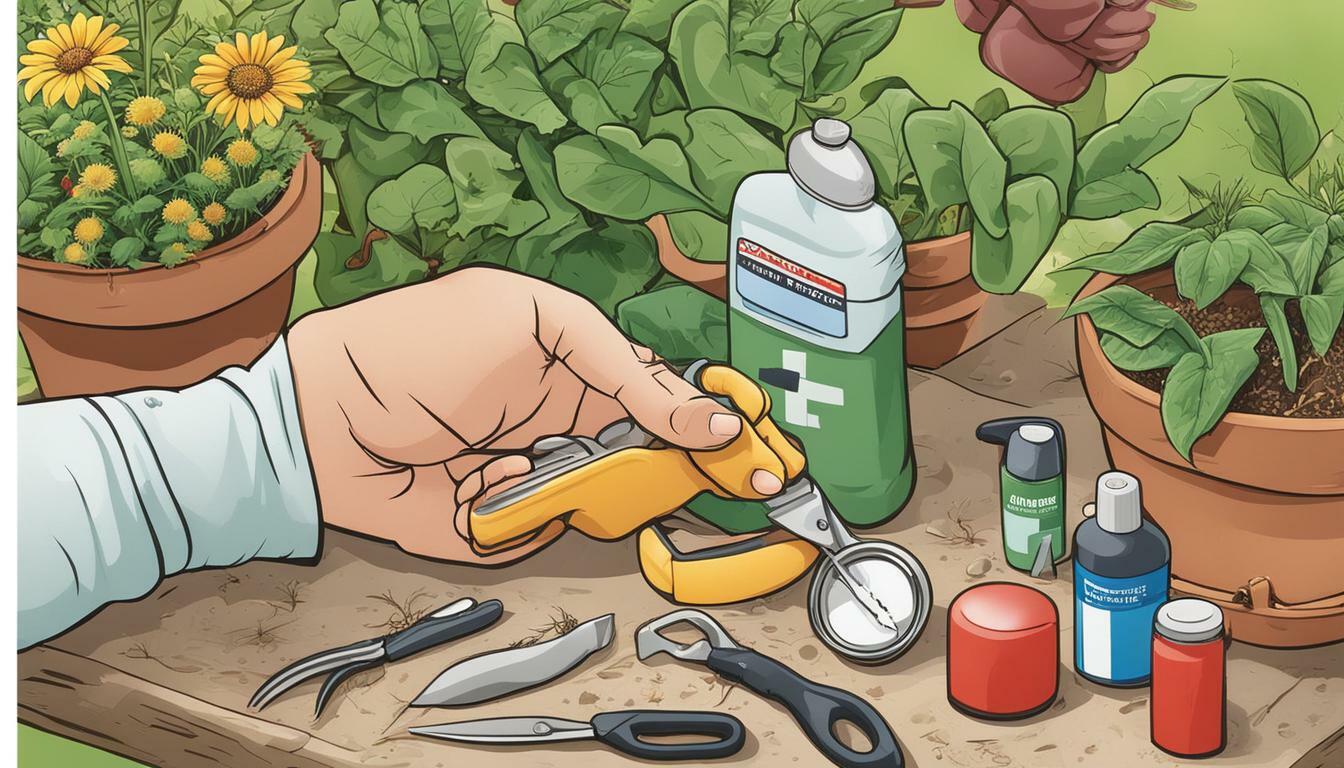
Having a well-equipped first aid kit specifically designed for gardening accidents can also help in treating plant-related injuries effectively. The kit should include essentials such as bandages, antiseptic solutions, tweezers, and gloves. Understanding the nature of plant-related injuries and having the necessary first aid supplies can make a significant difference in the outcome of an injury.
Understanding Plant-Related Injuries
- Skin irritation caused by exposure to sap
- Cuts and puncture wounds caused by thorns and needles
- Allergic reactions
- Inhalation of toxic pollen or spores
- Ingestion of poisonous berries or fruits
Plant Injury Treatment
If you experience skin irritation or a puncture wound from a plant:
- Wash the affected area with soap and water
- Take over-the-counter pain relief medications like paracetamol or ibuprofen to alleviate pain and inflammation
- If the injury is severe, seek medical help immediately
The Importance of First Aid Kits for Gardening
Gardening can be a relaxing and enjoyable hobby, but it also poses potential risks for injuries. From cuts and scrapes to bee stings and sunburns, accidents can happen while tending to your garden. Therefore, it is essential to have a well-equipped first aid kit specifically designed for gardening accidents.
Having a gardening first aid kit can provide immediate assistance in the event of an injury, ensuring prompt treatment and reducing the risk of complications. A standard first aid kit may not contain all the necessary items required to handle plant-related injuries. Therefore, it is crucial to have a gardening-specific kit that includes the appropriate supplies.
Some essential items to include in your gardening first aid kit are bandages, disposable gloves, antiseptic solution, tweezers, and scissors. It is also advisable to have a small magnifying glass to enable you to get a closer look at any embedded thorn or splinter. Ensure that your kit contains ample supplies, and check regularly to ensure that they are not expired or running low.
Aside from having a first aid kit, taking precautions to prevent accidents is crucial. Wearing appropriate clothing, such as long-sleeved shirts and sturdy shoes, can protect against cuts and insect bites. Applying sunscreen and wearing a hat can help prevent sunburns and heat stroke.
Additionally, it is essential to be mindful of potentially hazardous plants, such as poison ivy or thorny bushes, and take appropriate precautions when handling them. By following basic garden safety tips, such as being aware of your surroundings, staying hydrated, and taking breaks when necessary, you can further reduce the risk of accidents.
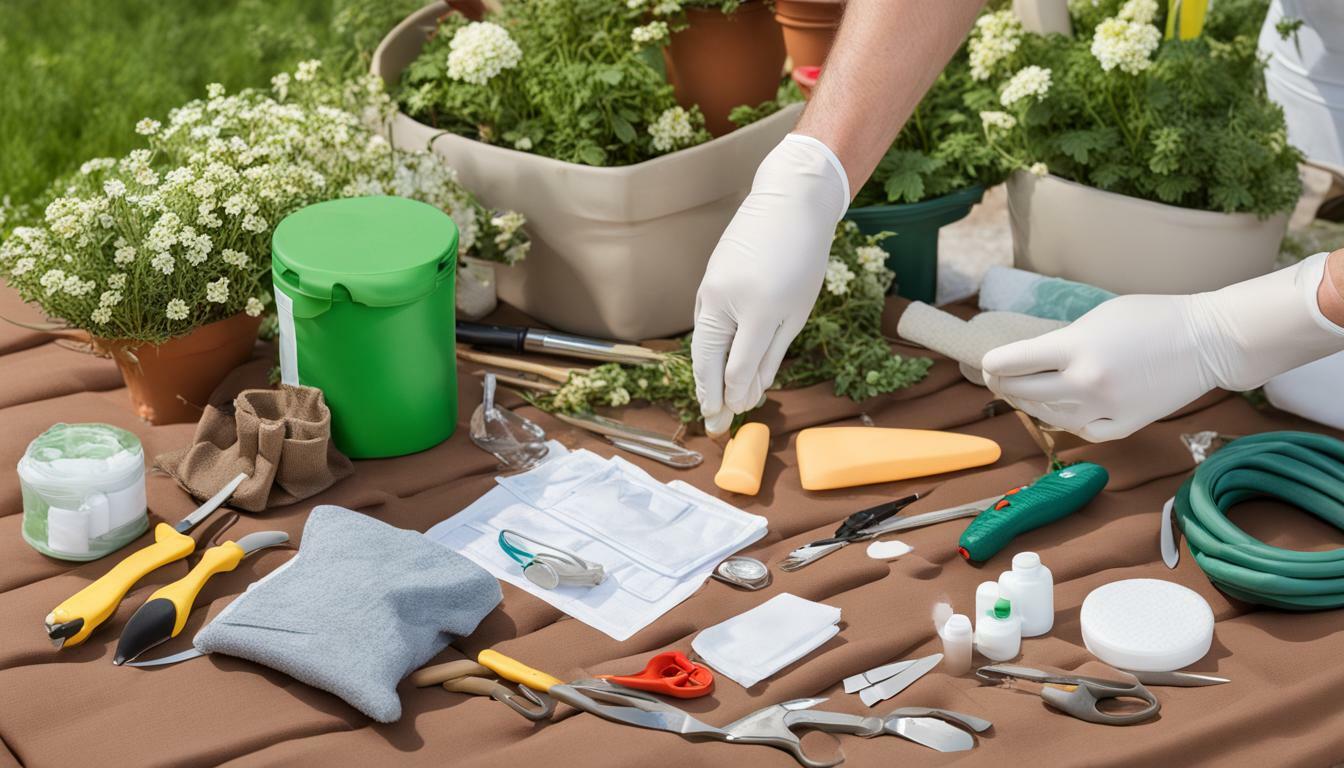
In summary, having a gardening first aid kit and following garden safety tips are crucial in preventing and handling plant-related injuries. Accidents can happen to anyone, but by being adequately prepared, gardeners can enjoy their hobby while prioritizing their well-being.
Essential Items for a Gardening First Aid Kit
Gardening can be a relaxing hobby, but it’s not without its hazards. Working with plants can result in injuries, from minor cuts and scratches to more severe wounds. To ensure that you’re prepared for any eventuality, it’s essential to have a gardening first aid kit on hand. Here are some of the items that you should include in your kit:
| Item | Significance |
|---|---|
| Bandages | To cover cuts, scrapes, and blisters. |
| Antiseptic solution | To clean wounds and prevent infection. |
| Tweezers | To remove splinters or debris from wounds. |
| Gloves | To protect against thorns, sharp objects, and poisonous plants. |
| Cold compress | To reduce inflammation and swelling. |
| Scissors | To cut tapes and bandages. |
| Pain relief medication | To alleviate pain and discomfort. |
| Flashlight | For examining wounds in low light or night-time conditions. |
These items are essential for treating plant-related injuries, but there are other precautions you can take to prevent injuries from occurring in the first place. Consider wearing protective clothing, such as long pants, sturdy shoes, and gloves, to minimize exposure to thorns and poisonous plants. You can also select ergonomic gardening tools that provide a comfortable grip, reducing the risk of hand and wrist strain.
By taking steps to prevent injuries and having a well-stocked gardening first aid kit, you can ensure that you’re prepared to handle any situation that arises while gardening. Remember that prevention is always better than cure, so prioritize your safety and well-being while enjoying your garden.

Precautions for Gardening Safety
Gardening is a relaxing and rewarding hobby enjoyed by millions of people across the country. However, it’s important to take precautions to prevent plant-related injuries that can range from minor cuts and scrapes to more serious injuries like allergic reactions and poisonous plant exposure.
The following gardening safety precautions can help minimize the risk of injury:
- Wear gloves to protect your hands from cuts, scrapes, and allergic reactions. Choose gloves that fit snugly and are appropriate for the task at hand.
- Wear long-sleeved shirts and trousers to protect your skin from poisonous plants like poison ivy and poison oak.
- Wear sturdy shoes or boots with good traction to prevent slips, trips, and falls.
- Use ergonomic gardening tools with comfortable handles that reduce strain on your hands and wrists.
- Be aware of your surroundings and watch out for hazards like sharp objects, uneven ground, and low-hanging branches.
- Never work in the garden under the influence of drugs or alcohol as it impairs judgment and reaction times.
- Keep a first aid kit nearby and know how to use it in case of an emergency.
- If you have allergies, asthma, or other health conditions, consult your doctor before starting gardening to ensure you take the necessary precautions.
By following these gardening safety precautions, you can minimize the risk of injuries and ensure a safe gardening experience. Always prioritize your safety and be prepared to handle any plant-related injuries that may occur.
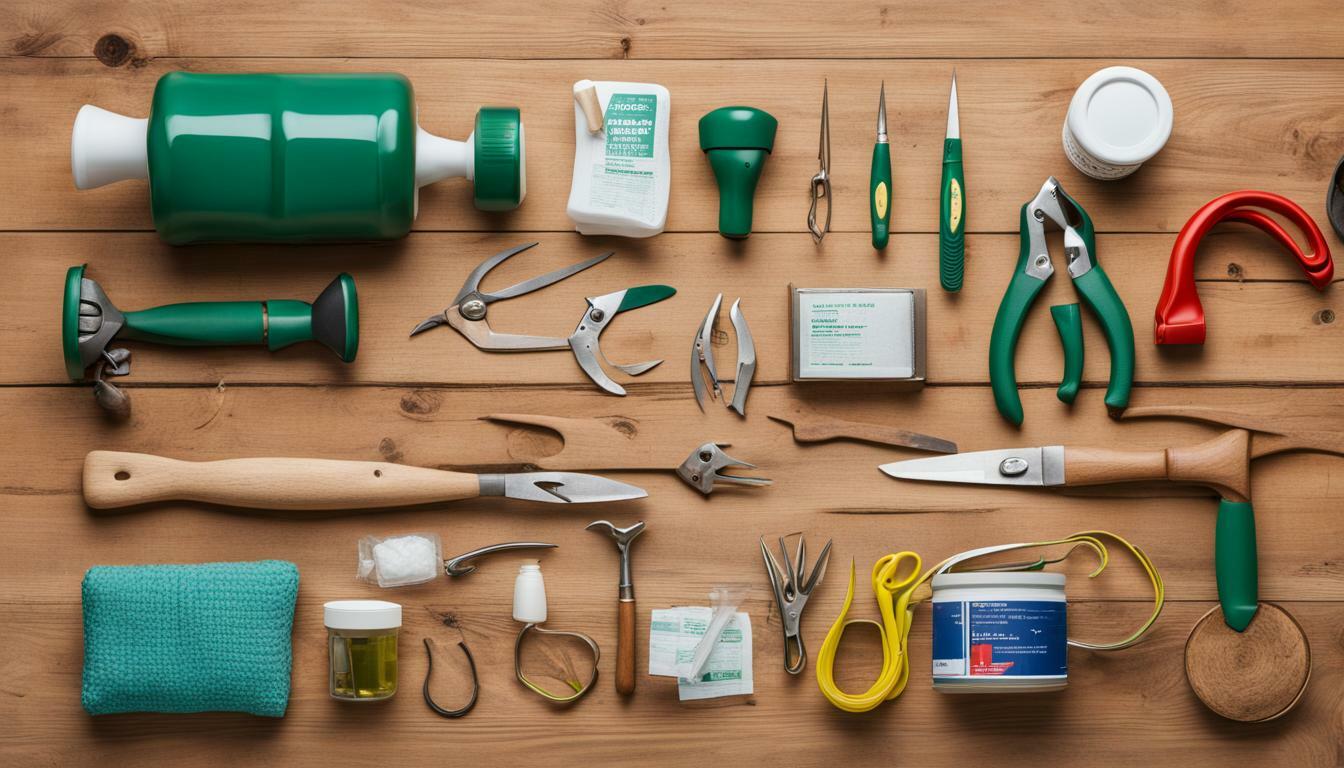
Emergency First Aid for Gardening Accidents
Despite taking precautions, gardening accidents can still occur and require immediate attention. In case of a plant-related injury, it is essential to administer first aid promptly to prevent complications. Here are the steps to follow:
Cuts and Scrapes
If the wound is bleeding, apply pressure to it with a clean cloth or bandage. Rinse the cut with water and clean it thoroughly with an antiseptic solution. Apply a sterile adhesive bandage or dressing to the area and keep the wound covered to prevent infection.
Splinters
Using clean tweezers, carefully remove the splinter from the skin. Clean the area with an antiseptic solution and apply a sterile dressing. Monitor the area for signs of infection.
Blisters
If a blister has formed due to friction, clean the area with an antiseptic solution and cover it with a sterile dressing. Do not pop the blister, as this can increase the risk of infection.
Eye Injuries
If a foreign object has entered the eye, do not rub it. Flush the eye with clean water or a sterile saline solution for at least 15 minutes. If the object is still present or if irritation persists, seek immediate medical attention.
Severe Injuries
If a gardening accident results in a severe injury, such as a deep cut or broken bone, call emergency services immediately. Administer basic first aid, such as applying pressure to the wound or immobilising the affected area while waiting for medical assistance.
Remember, in case of a gardening accident requiring emergency first aid, always prioritise your safety and seek medical attention if necessary.
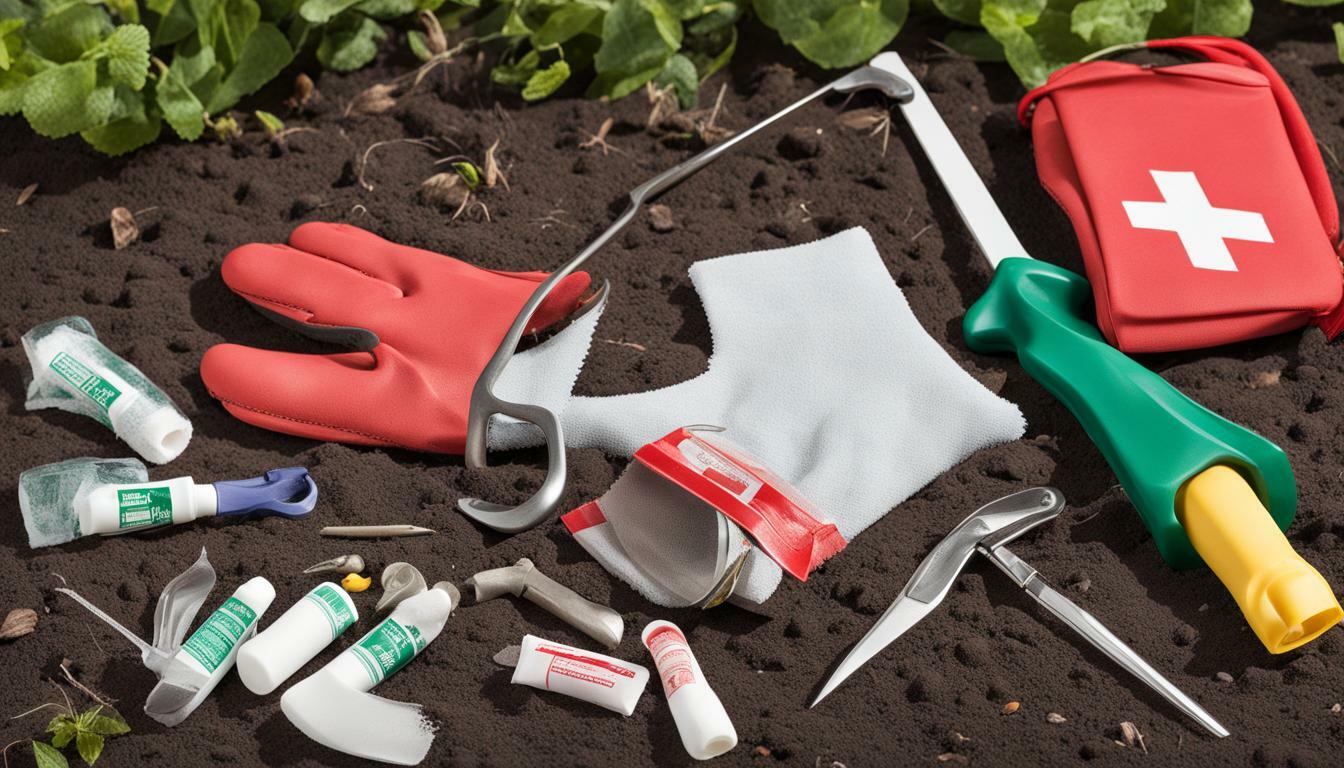
Additional Safety Measures for Gardening
While following gardening safety precautions is essential for preventing plant-related injuries, there are additional measures gardeners can take to further minimize the risk of accidents.
One of the most important steps is to use ergonomic gardening tools. These tools are designed to reduce strain on your muscles and joints, making gardening more comfortable and safer. Look for tools with cushioned handles and long shafts, which can help reduce the strain on your back and joints.
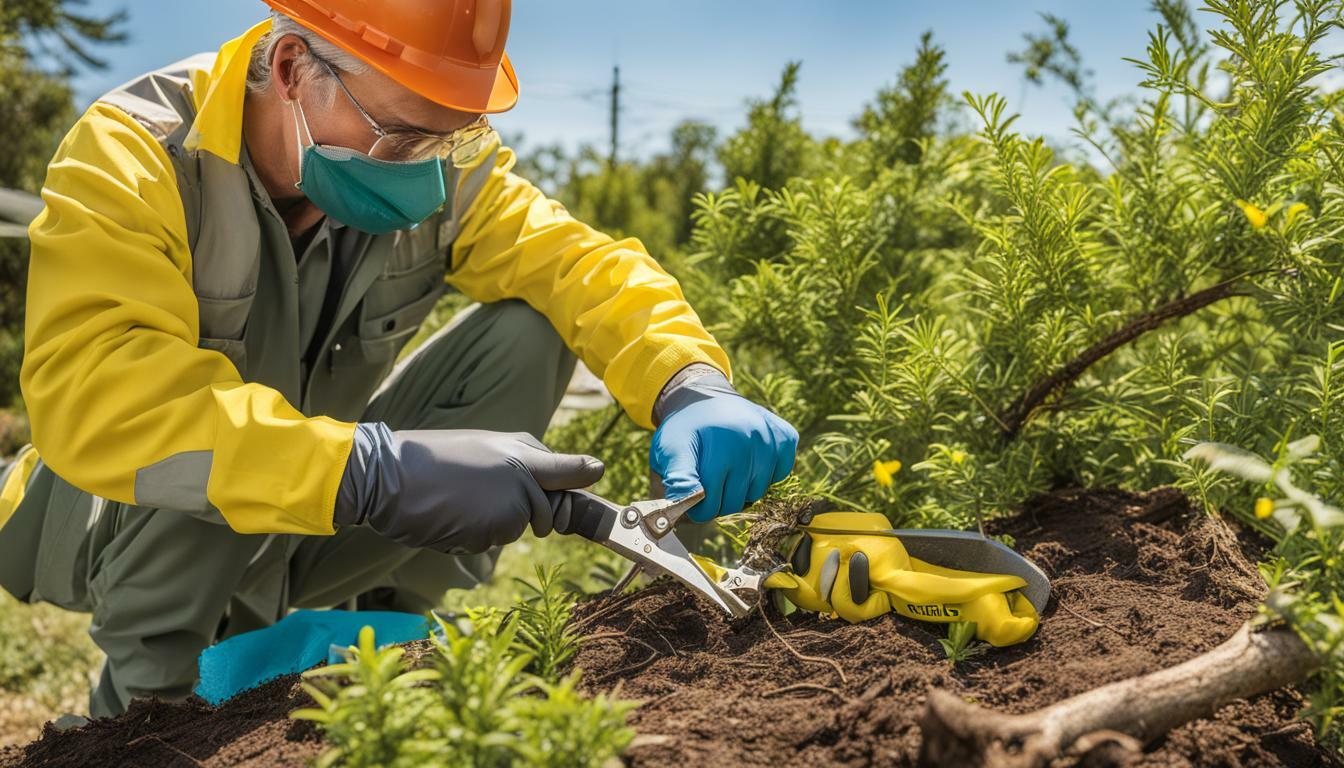
Wearing protective clothing is another crucial safety measure. When working in the garden, wear long sleeves and pants made of durable materials such as denim or canvas to protect your skin from scratches and cuts. Additionally, wear gardening gloves to protect your hands from thorns, prickly plants, and other hazards.
When using gardening equipment, read the instructions carefully and follow them closely to avoid accidents. Always unplug electrical appliances when not in use to avoid electrical hazards.
It’s also important to keep your gardening area clean and free of clutter. Remove any debris, rocks, or other hazardous objects that may pose a tripping or slipping hazard. Additionally, secure any loose fencing or trellises to prevent them from falling and causing injuries.
By following these additional safety measures, you can further reduce the risk of plant-related injuries while enjoying your gardening hobby.
Maintaining and Restocking Your Gardening First Aid Kit
After assembling your gardening first aid kit, it is essential to keep it up-to-date and well-stocked. Check the kit regularly, and replace any used or expired items. By keeping your kit up-to-date, you will be prepared to handle any plant-related injuries that may occur while gardening.
First, remove any expired items from the kit and replace them with fresh supplies. Check the expiry dates of all medications, including topical creams and pain relief tablets. Discard any items that have passed their expiration dates and replace them with new ones. This step will ensure that all the medicines in your kit are reliable and effective when you need them.
In addition to replacing expired items, make sure the kit contains all the essential supplies. These include bandages, gauze pads, adhesive tape, antiseptic solution or wipes, and disposable gloves. Other items that should be in the kit are tweezers, scissors, and a thermometer.
You may also want to include a small, waterproof flashlight in your kit, as gardening accidents can happen at any time of the day. A whistle, a notepad, and a pen are useful as well, in case you need to call for help or write down emergency information.
| Essential Items | Quantity |
|---|---|
| Bandages (various sizes) | At least 10 |
| Gauze pads | At least 10 |
| Adhesive tape | 1 roll |
| Antiseptic solution or wipes | At least 10 |
| Disposable gloves | At least 2 pairs |
| Tweezers | 1 pair |
| Scissors | 1 pair |
| Thermometer | 1 |
Finally, store your gardening first aid kit in a cool, dry place that is easily accessible. Make sure everyone in your household knows where the kit is located and how to use its contents in case of a gardening accident.
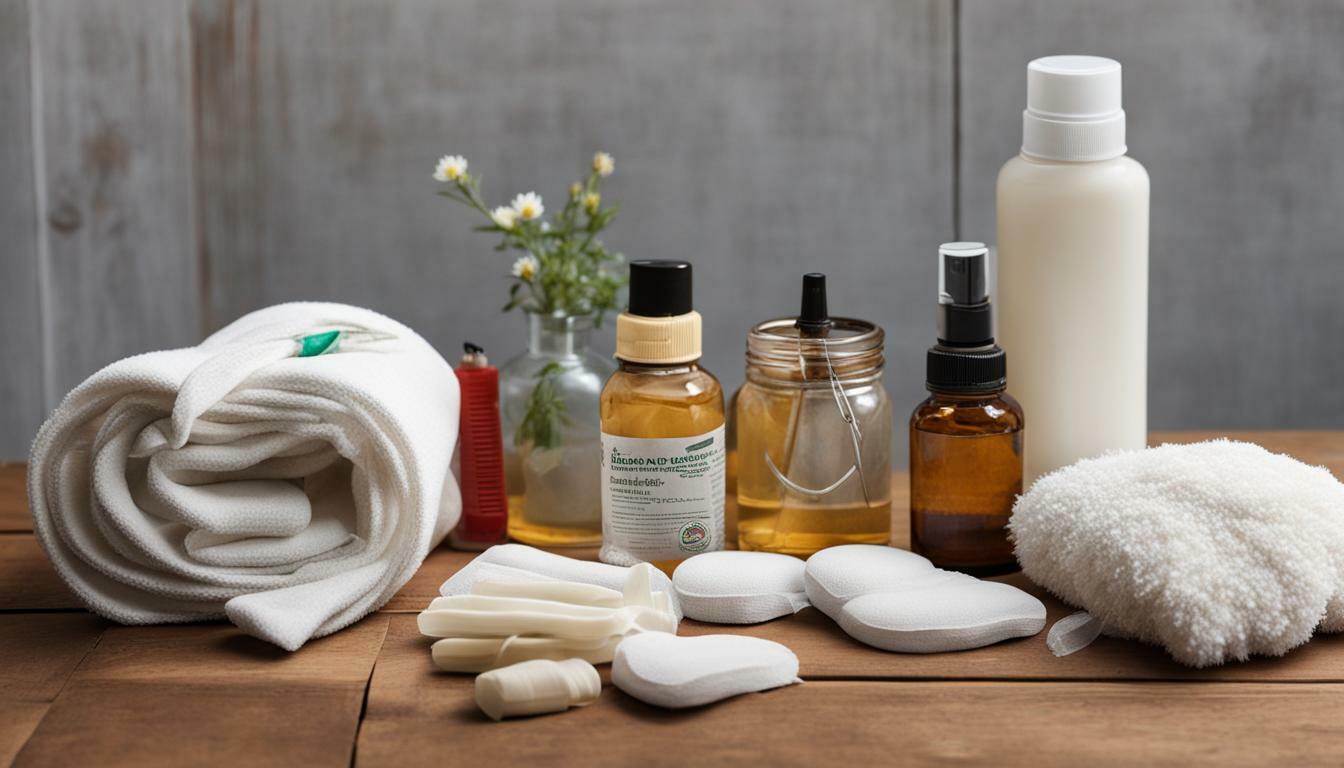
By maintaining and restocking your gardening first aid kit, you can be confident that you are prepared to handle any plant-related injuries that may occur while gardening. Keep the kit up-to-date, and store it in an easily accessible location, so you can quickly access its contents in case of an emergency.
Conclusion
In conclusion, gardening can be a wonderful hobby that allows you to reconnect with nature and enjoy the outdoors. However, it’s important to be aware of the potential risks of plant-related injuries and take the necessary precautions to prevent them. By having a well-equipped first aid kit specifically for gardening accidents, you can ensure prompt treatment and minimize the risk of complications.
Remember to always wear protective clothing, use ergonomic gardening tools, and follow safety guidelines to reduce the chances of accidents occurring. In case of an emergency, it’s crucial to be prepared to administer emergency first aid until medical help arrives.
Finally, maintaining and restocking your gardening first aid kit regularly will ensure that you are always prepared to handle any plant-related injuries that may occur. By prioritizing your well-being and following these tips, you can nurture your garden and enjoy a safe and enjoyable gardening experience. Happy gardening!
